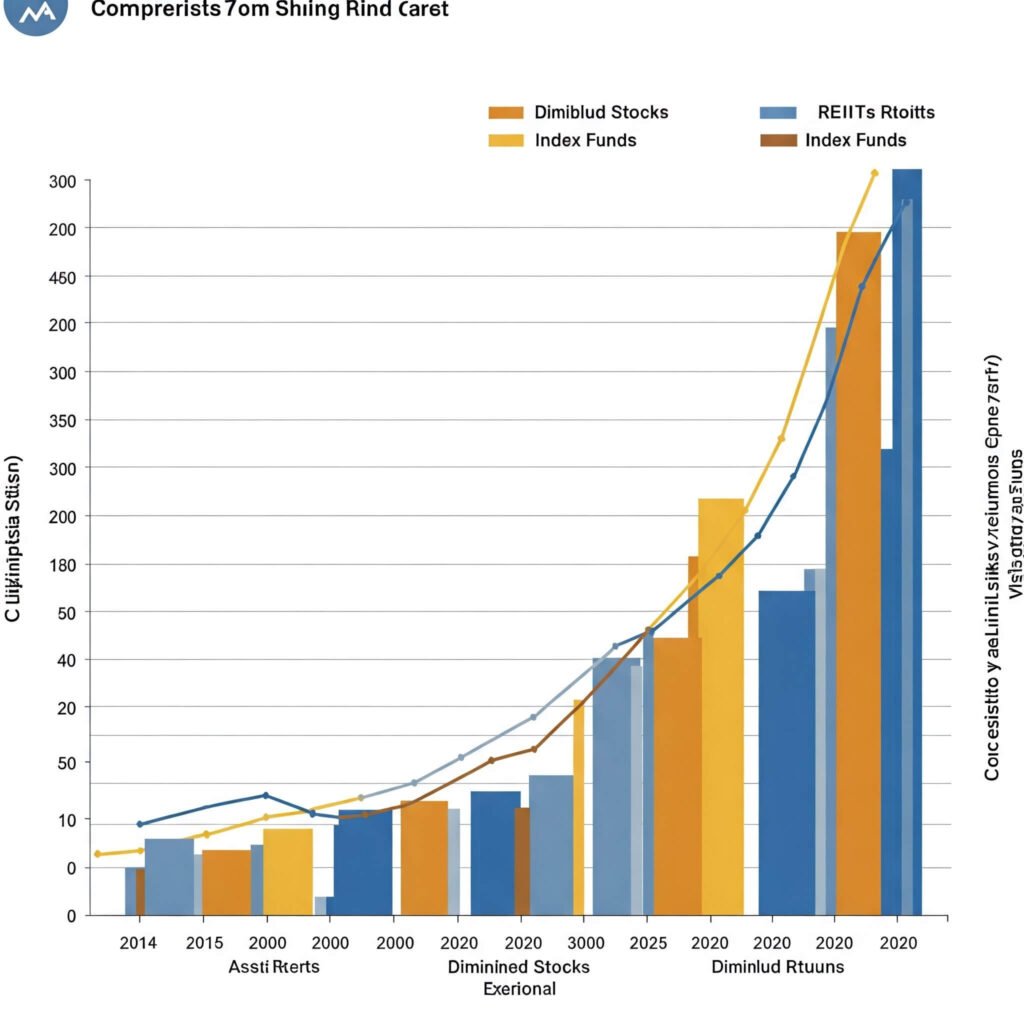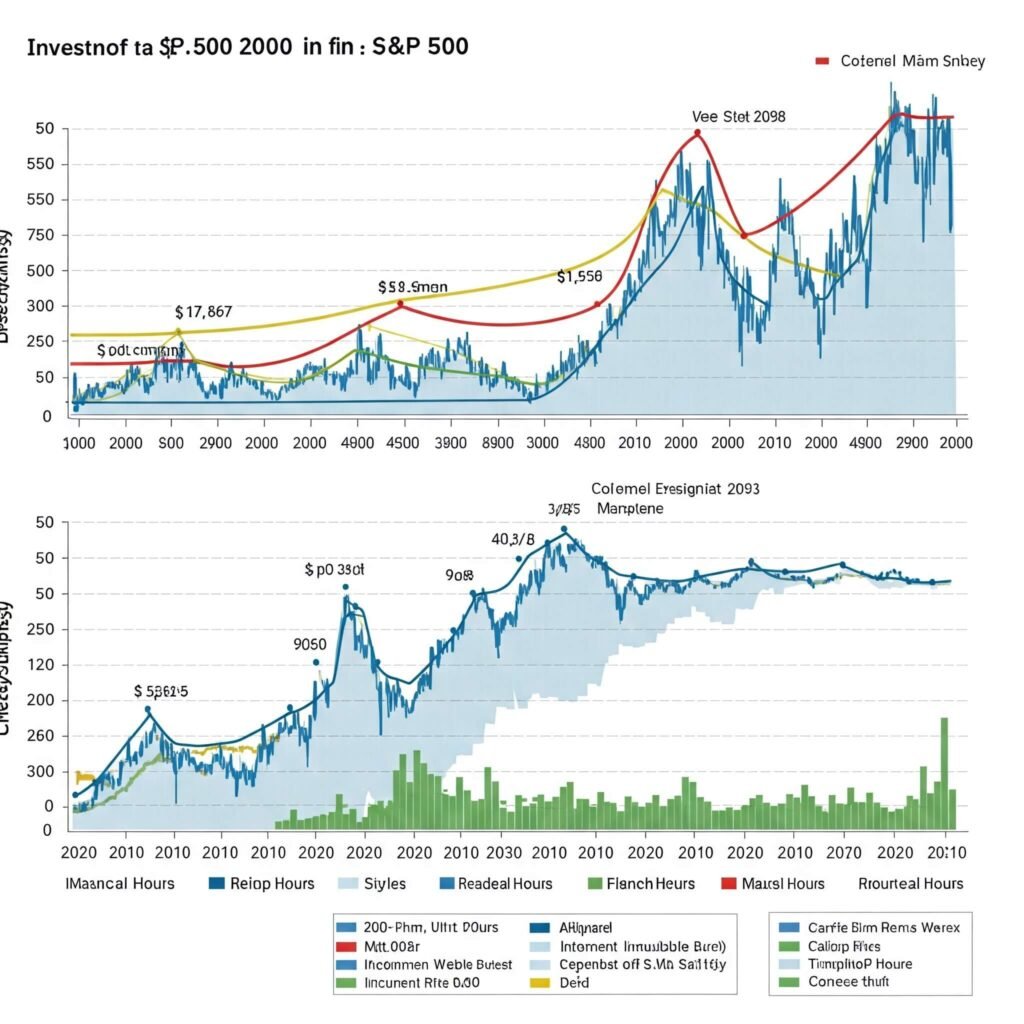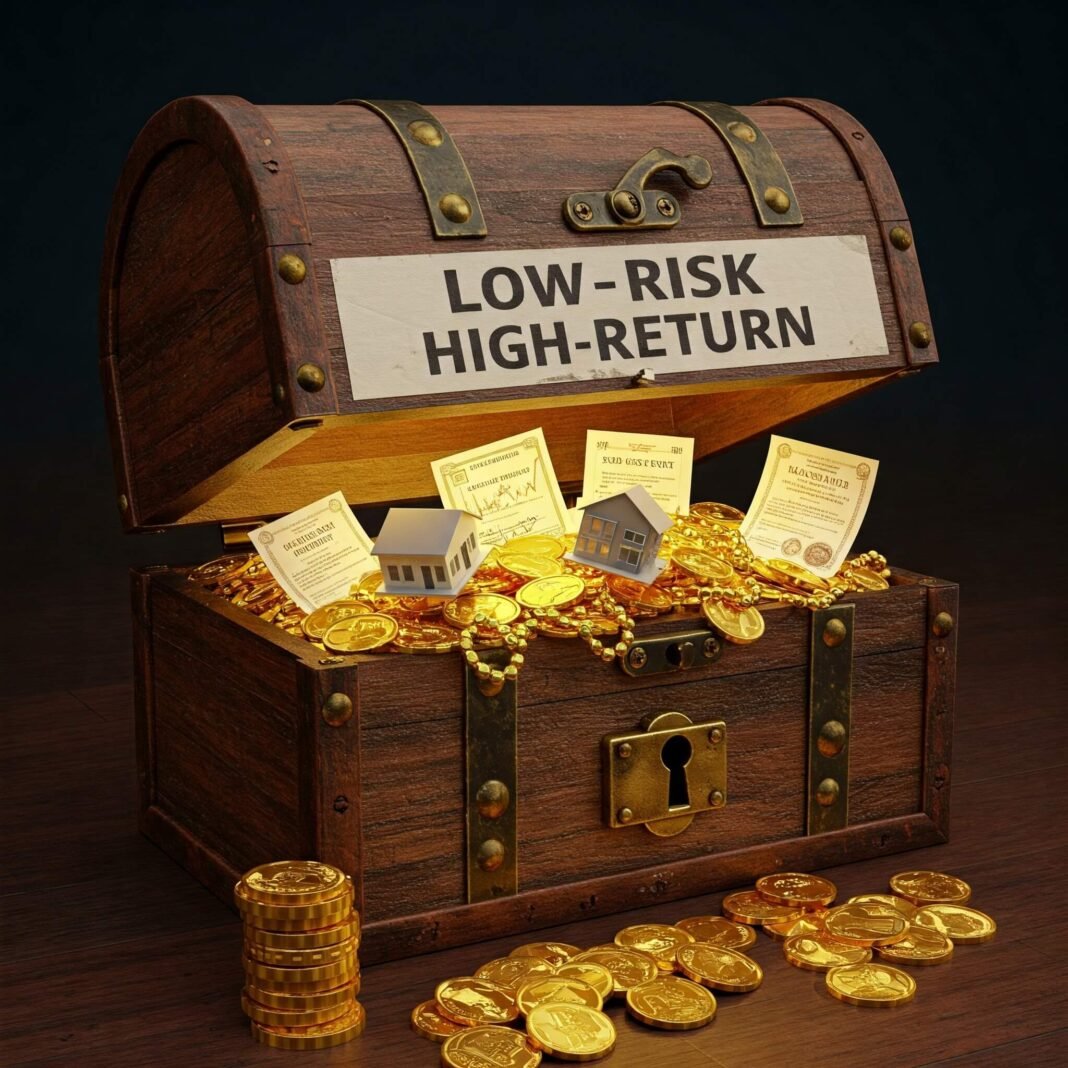Investors dream of the holy grail: low-risk high-return investing. It sounds perfect—big profits with minimal worry. But is it realistic, or are we chasing a financial fairy tale? The truth is, many beliefs about building a “safe” yet lucrative portfolio are myths that can lead to costly mistakes. In this post, we’ll debunk five common portfolio myths, share actionable strategies for safe investing, and help you build a portfolio that balances risk and reward. Let’s dive in!
Why Low-Risk High-Return Investing Sounds Too Good to Be True
The promise of low-risk high-return investing captivates beginners and seasoned investors alike. Who wouldn’t want to earn double-digit returns without losing sleep? Unfortunately, the financial world doesn’t work that way. Risk and reward are inherently linked—higher returns often come with higher risks. Believing otherwise can lead to poor decisions, like chasing trendy stocks or neglecting diversification. Let’s explore five myths that keep this dream alive and how to approach investing more realistically.

Myth 1: You Can Eliminate Risk Entirely with Low-Risk High-Return Investments
Many investors believe they can build a portfolio that’s 100% safe while still earning high returns. The reality? No investment is risk-free. Even “safe” assets like bonds or savings accounts carry risks, such as inflation eroding purchasing power or interest rate fluctuations.
How to Manage Risk Instead of Avoiding It
- Diversify: Spread your money across asset classes like stocks, bonds, and real estate to reduce exposure to any single risk.
- Invest in index funds: These track broad markets, offering stability compared to individual stocks. For example, the S&P 500 has historically returned ~7-10% annually with moderate risk (Investopedia).
- Rebalance regularly: Adjust your portfolio to maintain your desired risk level as markets shift.
Takeaway: Low-risk high-return investing isn’t about eliminating risk but managing it smartly.
Myth 2: High Returns Always Require High Risk
The flip side of the first myth is the belief that you must take big risks to earn big rewards. While high-risk investments like cryptocurrencies or startup ventures can yield massive gains, they’re not the only path to strong returns.
Smarter Paths to High-Return Investments
- Dividend stocks: Companies like Procter & Gamble pay steady dividends, offering returns with lower volatility than growth stocks.
- Real estate investment trusts (REITs): These provide income from property investments without the hassle of owning real estate directly.
- Compound interest: Investing early and consistently in low-cost ETFs can grow wealth significantly over time. For example, $10,000 invested at 7% annually grows to ~$76,000 in 30 years (Bankrate).
Takeaway: Low-risk high-return investing is possible by focusing on steady, compounding growth rather than speculative bets.

Myth 3: Diversification Guarantees Low-Risk High-Return Investing
Portfolio diversification is often hailed as the ultimate risk-reducer, but it’s not a magic bullet. Over-diversification or poorly chosen assets can dilute returns without meaningfully lowering risk.
How to Diversify Effectively
- Focus on quality: Choose assets with strong fundamentals, like blue-chip stocks or investment-grade bonds.
- Mix uncorrelated assets: Combine stocks, bonds, and commodities, which often move independently. For instance, when stocks dip, bonds may rise (Morningstar).
- Avoid overlap: Investing in multiple tech ETFs may feel diversified but exposes you to sector-specific risks.
Real-World Example: In 2008, diversified portfolios with bonds and gold outperformed stock-heavy portfolios during the financial crisis, proving the value of strategic diversification.
Takeaway: Diversification supports low-risk high-return investing when done thoughtfully, not blindly.
Myth 4: Safe Investments Are Always Boring
Government bonds or savings accounts are often seen as the only “safe” options, but they’re not your only choices for low-risk high-return investing. Many investors assume safe equals low returns, but that’s not always true.
Exciting Yet Safe Investment Options
- Municipal bonds: These offer tax-free income and are backed by local governments, blending safety with decent returns.
- Preferred stocks: These combine bond-like stability with higher yields, ideal for income-focused investors.
- Peer-to-peer lending: Platforms like LendingClub allow you to lend money directly, earning 5-7% returns with moderate risk (LendingClub).
Takeaway: Safe investing can be dynamic and profitable with the right choices.
Myth 5: Timing the Market Is Key to Low-Risk High-Return Investing
Many believe they can outsmart the market by buying low and selling high. However, market timing is notoriously difficult, even for professionals. Studies show that missing just the 10 best market days over 20 years can cut returns in half (J.P. Morgan).
A Better Approach: Time in the Market
- Dollar-cost averaging: Invest a fixed amount regularly to smooth out market volatility.
- Long-term focus: Hold investments for decades to ride out short-term fluctuations.
- Stay disciplined: Avoid panic-selling during downturns or chasing hot trends.
Real-World Example: An investor who stayed in the S&P 500 from 2000 to 2020 earned ~6% annually despite two major crashes, compared to ~2% for those who tried to time the market.
Takeaway: Low-risk high-return investing thrives on patience, not perfect timing.

How to Build a Low-Risk High-Return Portfolio
Now that we’ve busted these myths, here’s a step-by-step guide to creating a portfolio that balances safety and growth:
- Assess your risk tolerance: Use tools like Vanguard’s risk quiz to understand your comfort level (Vanguard).
- Set clear goals: Are you saving for retirement, a house, or passive income? Goals shape your asset allocation.
- Allocate assets wisely: A common rule is 60% stocks, 40% bonds for moderate risk, but adjust based on your needs.
- Monitor and adjust: Review your portfolio annually to ensure it aligns with your goals and market conditions.
- Work with a professional: A financial advisor can provide tailored advice for low-risk high-return investing.
Conclusion: Rethinking Low-Risk High-Return Investing
The dream of low-risk high-return investing isn’t entirely a myth, but it requires debunking outdated beliefs and adopting smarter strategies. By diversifying effectively, focusing on long-term growth, and choosing quality investments, you can build a portfolio that delivers strong returns without unnecessary risks. Start small, stay disciplined, and let time work its magic. What’s one investment myth you’ve heard that you’d like to explore further? Share in the comments!





